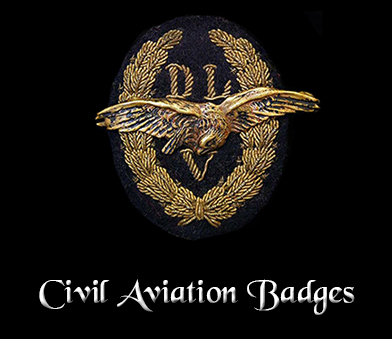

Since the Treaty of Versailles forbade Germany to have an air force, German pilots trained in violation of the treaty in secret. Initially, civil aviation schools within Germany were used, yet only gliders and light trainers could be used in order to maintain the façade that the trainees were going to fly with civil airlines such as Deutsche Lufthansa. To train its pilots on the latest combat aircraft, Germany solicited the help of its future enemy, the Soviet Union, which was also isolated in Europe. A secret training airfield was established at Lipetsk in 1924 and operated for approximately nine years using mostly Dutch and Russian, but also some German, training aircraft before being closed in 1933. This base was officially known as 4th squadron of the 40th wing of the Red Army.
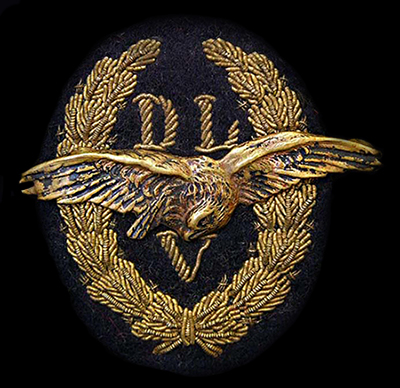
Often mistaken for an early cap badge of the Deutscher Luftsportverband, this very rare cap badge is, in fact, the insignia of the Deutsche Luftfahrt Verband e.V, - Berlin (German Aviation Association), an organization founded in 1928
which preceded , and was replaced by, the Deutscher Luftsportverband (DLV) in 1933
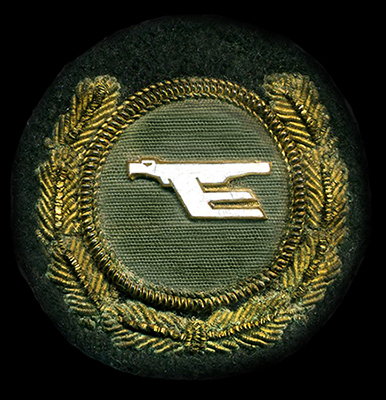
Cap badge of the Deutsche Verkehrsflieger-Schule (DVS)
The Deutsche Verkehrsfliegerschule (DVS), German Air Transport School, was a covert military-training organization operating as a flying school in Germany. It began during the Weimar Republic in Staaken, Berlin in 1925 and its head office was transferred in 1929 to Broitzem airfield near Braunschweig.
The DVS was outwardly a flying school for commercial pilots, but in fact became a secret military arm training military aviators for the future Luftwaffe. This training facility grew in importance in the initial stages of Nazi Germany, while camouflaging as a harmless civilian organization (Tarnorganisation), at the time of Germany's rearmament in violation of the Versailles Treaty.
The first steps towards the Luftwaffe's formation were undertaken just months after Adolf Hitler came to power. Hermann Göring, a World War I ace with 22 victories and the holder of the Orden Pour le Mérite, became National Kommissar for aviation with former Deutsche Lufthansa director Erhard Milch as his deputy. In April 1933 the Reichsluftfahrtministerium (RLM Reich Air Ministry) was established. The RLM was in charge of development and production of aircraft, and soon afterwards the test site or Erprobungsstelle at Rechlin became its testing ground, a military airfield that had been first established in August 1918. Göring's control over all aspects of aviation became absolute.
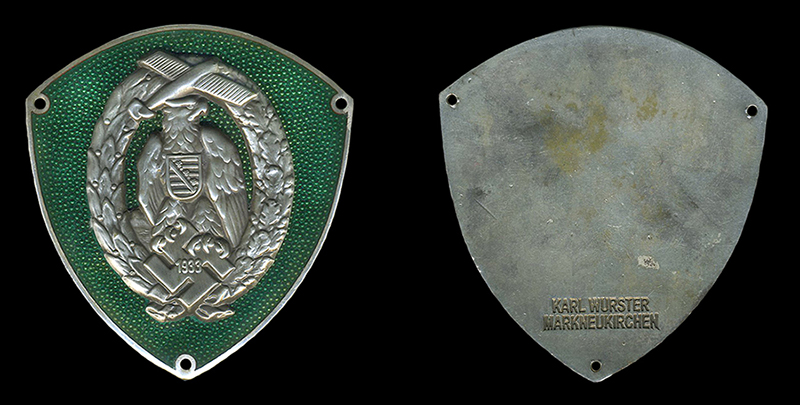
The official vehicle plaque for the 1933 Deutscher Luftsportverband (DLV) Air Show held in Saxony
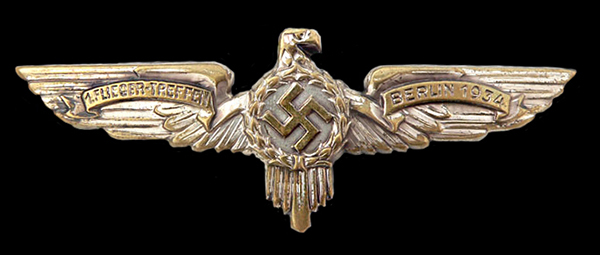
The official badge for the 1934 Deutscher Luftsportverband (DLV) Air Show held in Berlin
On 25 March 1933 the Deutscher Luftsportverband (DLV) (German Air Sport Association) absorbed all private and national organizations, whilst retaining its 'sports' title. The merging of all military aviation organizations in the RLM took place on 15 May 1933, which became the Luftwaffe's official 'birthday'. Many members of the Nationalsozialistisches Fliegerkorps (National Socialist Flyers Corps (NSFK) transferred to the Luftwaffe. As all such prior NSFK members were also Nazi Party members, this gave the new Luftwaffe a strong Nazi ideological base in contrast to the other branches of the German military. Göring had played a leading role in the buildup of the Luftwaffe in 1933 - 1936, but played little further part in the development of the Luftwaffe until 1936, and Milch became the "de facto" minister until 1937.

Deutscher Luftsportverband (Fliegersschaft) Pilot/Observer Badge

Deutscher Luftsportverband (Fliegersschaft) Radio Operator's Badge
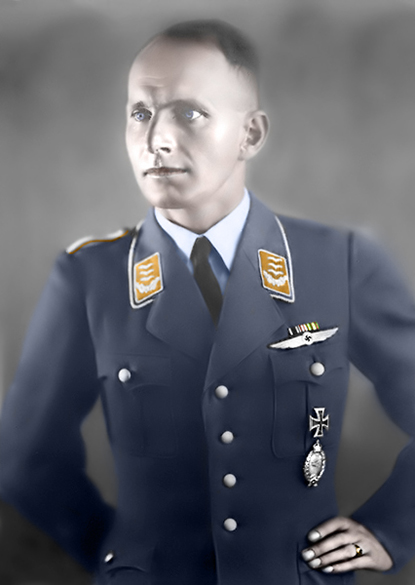

DLV Pilot/Observer badge in wear
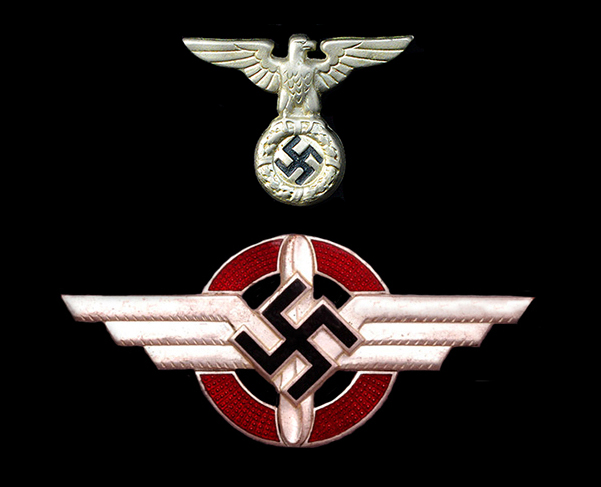
Insignia of the DLV - Deutscher Luftsportverband - cap badge, 1st pattern
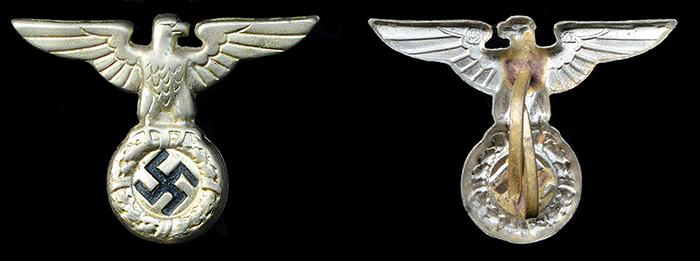
Typical 1st pattern NSDAP cap eagle, RZM marked with the number 17 for the maker F.W Assmann & Söhne - Lüdenscheid
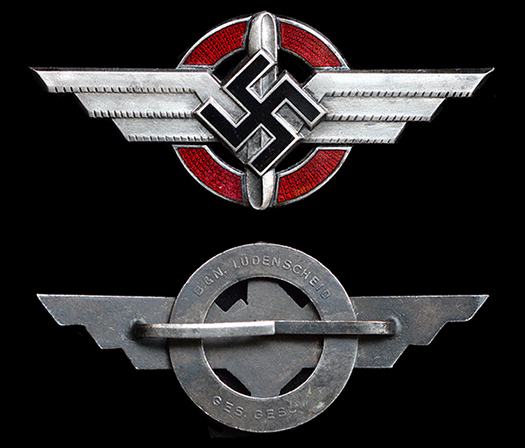
DLV cap badge by the maker Berg & Nolte - Lüdenscheid

DLV membership lapel pin

DLV, 3rd pattern, membership buttonhole badge
by Karl Wurster - Markneukirchen
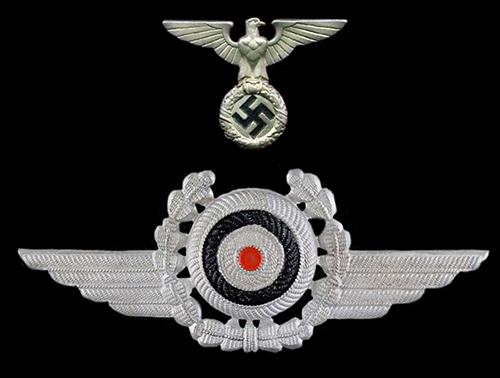
Insignia of the DLV - Deutscher Luftsportverband - cap badge, 2nd pattern
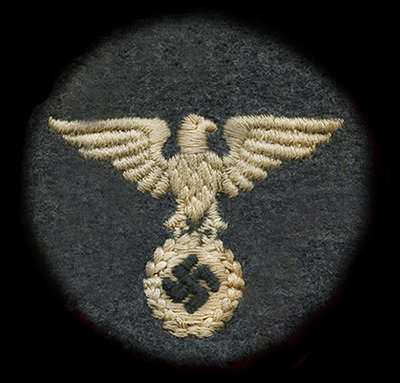
Insignia of the DLV - Deutscher Luftsportverband - sleeve eagle
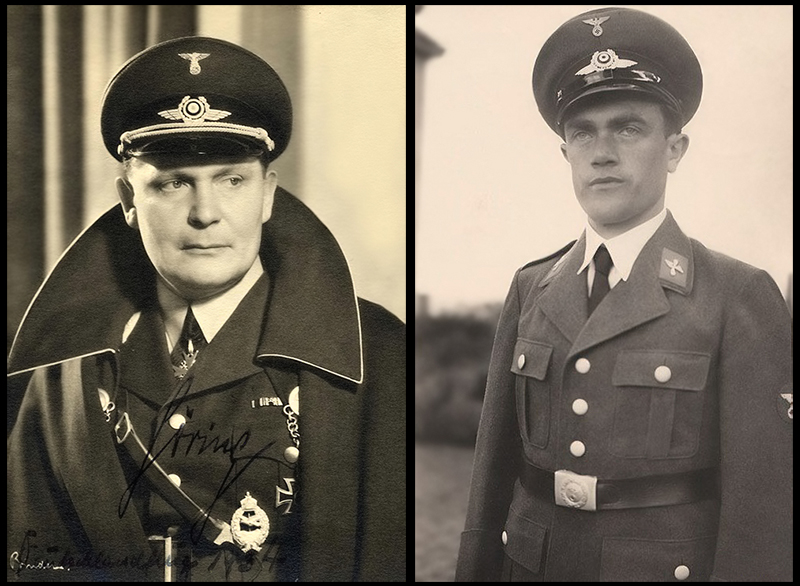
Insignia of the DLV - Deutscher Luftsportverband - cap badge, 2nd pattern in wear
Left: Hermann Göring seen wearing the 2nd pattern Insignia of the DLV - hand embroidered
Right: 2nd pattern metal insignia of the DLV for NCO/EM ranks and sleeve eagle in wear
![]()
Civil Pilots

Civil Pilot's Cap Badge
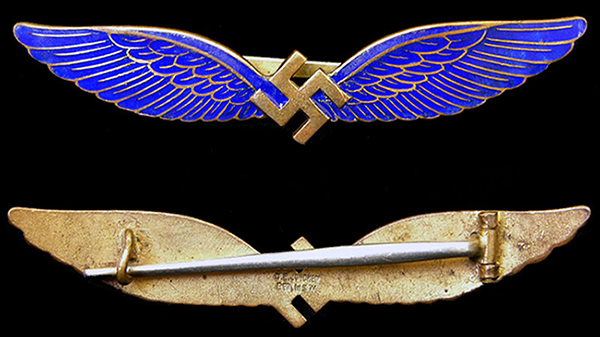
Civil Pilot's Badge
(C.E Juncker Berlin SW )
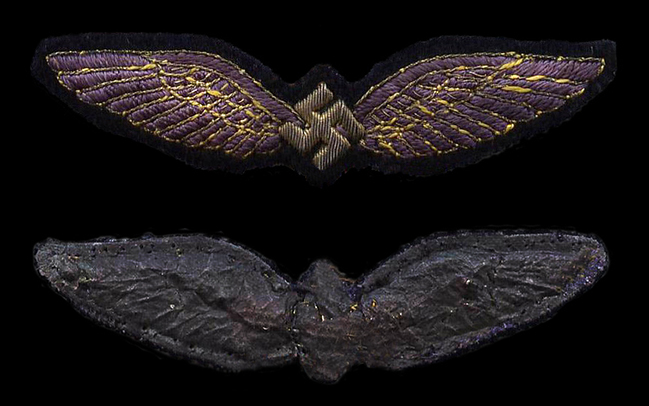
Civil Pilot's Badge in cloth
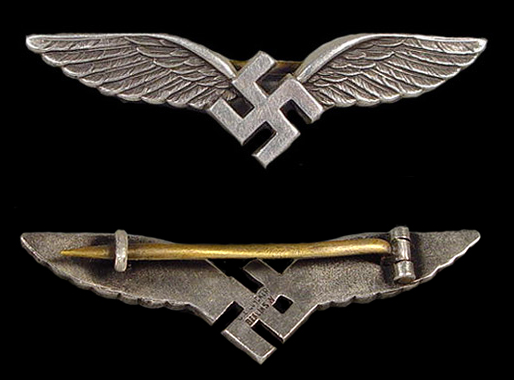
Civil Radio Operator's Badge
(C.E Juncker Berlin SW)
Introduced in 1935/36, and produced by “C.E Juncker-Berlin”, these civil aircrew badges were worn by members of the government-controlled airline, “Lufhansa”. Civilian pilots employed as instructors with the early clandestine ‘Luftwaffe’ were also authorized to wear the Civil Pilot’s badge.

Civil Pilot's cap badge - Lufthansa

Civil Pilot's cap badge and faithful service lapel badge in wear
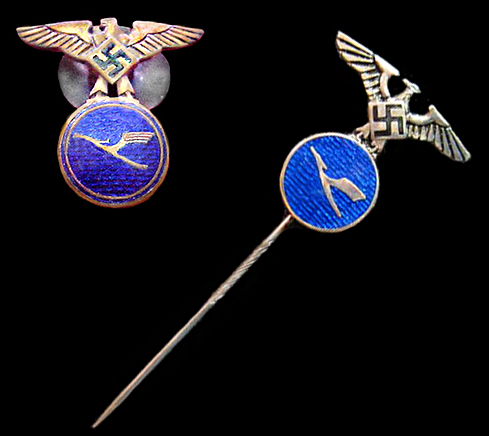
Lufthansa faithful service buttonhole and lapel badges
![]()
Civilian Maritime Air-Sea Rescue Service
(Seenotdienst)
In 1935, Lieutenant Colonel Konrad Goltz of the Luftwaffe, a supply officer based at the port of Kiel, was given the task of organizing the Seenotdienst, an air-sea rescue organization that would focus on the North Sea and the Baltic Sea. Goltz gained the cooperation of aircraft units of the Kriegsmarine as well as with civilian lifeboat societies and the German Maritime Search and Rescue Service (DGzRS, or "Deutsche Gesellschaft zur Rettung Schiffbrüchiger"). He held administrative command over the Ships and Boats Group which was organized at Kiel within the Luftwaffe. Goltz was to operate the Seenotdienst as a civilian organization manned by both military and civilian personnel, with civil registrations applied to the aircraft.
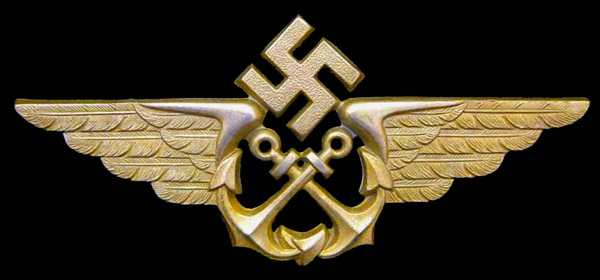
Civilian maritime (air-sea rescue) personnel cap badge

Cloth version
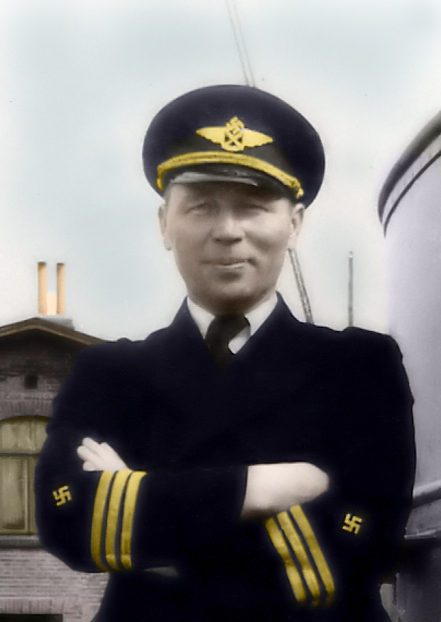
Air-sea rescue (Seenotdienst) Pilot